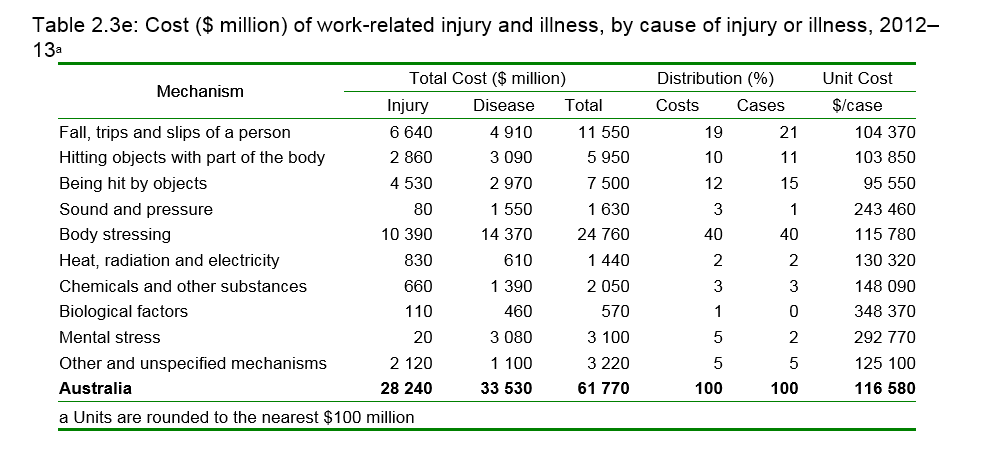 The cost of work-related injury and disease to workers, their employers and the community for the 2012–13 financial year data is estimated to be $61.8 billion, representing 4.1 per cent of GDP for the same period.
The cost of work-related injury and disease to workers, their employers and the community for the 2012–13 financial year data is estimated to be $61.8 billion, representing 4.1 per cent of GDP for the same period.
In a new report released by Safe Work Australia, figures show that the total economic cost of work-related injury and disease has increased by 1.2 billion dollars since the 2008-09 figures were released. This report provides an update of the “human cost” of work-related injury and illness to the Australian economy.
Work-related injuries, illnesses and deaths impose costs on employers, workers and the community. These include both direct costs and indirect costs.
Direct costs include items such as workers’ compensation premiums paid by employers or payments to injured or incapacitated workers from workers’ compensation jurisdictions.
Indirect costs include items such as lost productivity, loss of current and future earnings, lost potential output and the cost of providing social welfare programs for injured or incapacitated workers.
The Manufacturing, Construction and Health Care & Social Assistance industries account for nearly 40 per cent of total costs.
The Information Media & Telecommunications industry had the highest unit cost of $239 000 per case, however only 1 per cent of the total number of cases for Australia in 2012–13 occurred in this industry division.
The report also shows that the unit cost of a work-related injury or illness is significantly higher for males than for females with incidents involving males accounting for just over 60 per cent of the total number of incidents.
Cause of Injury or Illness
Body stressing or manual handling cases account for the most number of cases, although the cost per unit is relatively lower than other mechanisms.
Mechanisms which are more associated with disease cases, such as sound and pressure, biological factors and mental stress have a higher unit cost than those largely associated with injuries (such as falls and trips and body stressing).
While mental stress cases comprise two per cent of the total number of cases, they contribute five per cent of the total economic cost.

The cost estimate in this report does not include the cost to employers of compliance with WHS legislation and prevention activities.
For more information visit the Safe Work Australia website.
Source: Safe Work Australia, 29 October 2015

 Safety Australia Group
Safety Australia Group